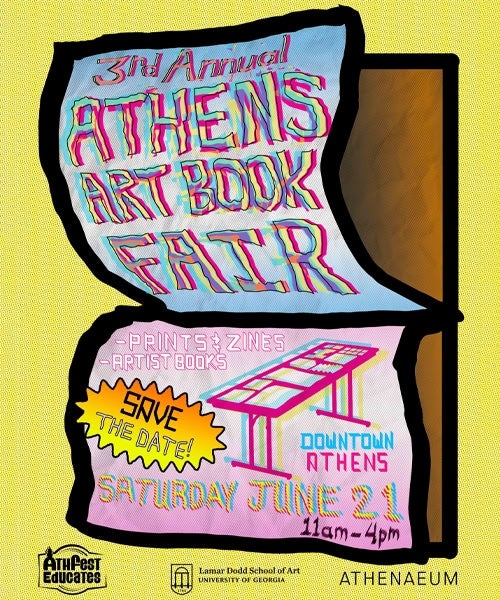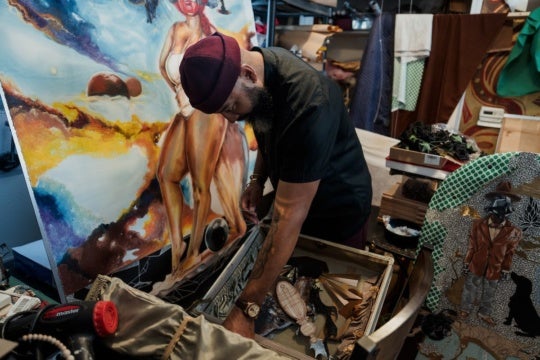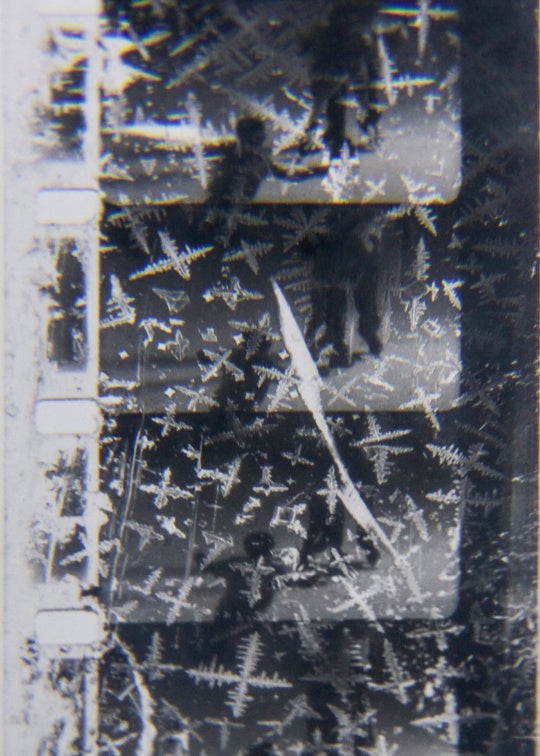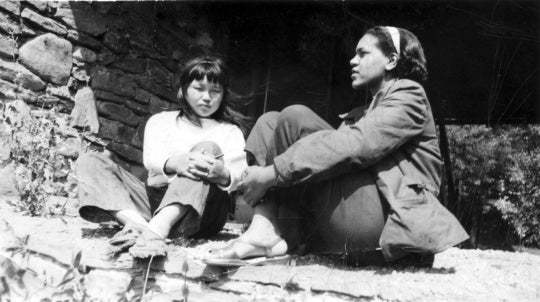
Hot neon letters that spell out “remember” greet visitors at the entrance to the exhibition of the same name at the McColl Center for Art + Innovation in Charlotte. With this simple yet provocative directive, artist Ivan Toth Depeña invites us to explore the vast, sometimes illogical, concept of time, and how each consecutive point in time connects to the next on a continuously forged path. Piling up and peeling back layers of visual matter, Depeña, who splits his time between Charlotte and Miami, fuses past with present in complex , dynamic pieces that at once collect and deconstruct memories, condensing time and the surrounding space into one multifaceted body of work.
“Remember” includes nine two- and three-dimensional works that serve both as a culmination of and rumination on his stint as artist-in-residence at the McColl Center. Through layers of abstract shapes, lines, and light sequences, Depeña traces the tumultuous history of the building, revealing the various physical gradations that make up the space, as well as the changing mental energy imbued over time by its inhabitants.

Built in 1926 as a Reformed Presbyterian Church, the building that houses the McColl Center sat vacant for a number of years after the congregation’s dissolution. It was sold in 1981 and eventually became a squatters’ shelter for the homeless. A massive fire accidentally set by an occupant destroyed the building in 1984, reducing it to a shell. Again, it sat empty until its renovation and transformation into the McColl Center in 1999. Elements of each phase of the building’s history appear in Depeña’s work, conjuring images of decay as well as renewal.
Installed in the main gallery, If that’s all there is … let’s break out the booze and have a ball is a multilayered, sensory environment bathed in concentrated, smoldering light evocative of a glowing fire—one that could signify either warmth or destruction. At the center of the installation , angular wood slabs are propped precariously against one another, perhaps on the verge of collapse, perhaps in the process of rebirth. Their severe, pointed angles and distinct verticality recall the building’s Gothic features, while their haphazard construction implies the makeshift shelters of the homeless.
Attached directly to the raw wooden slabs or suspended overhead, hard-edged fragments of broken mirrors twinkle and reflect the surrounding room and visual layers of its history: soot-stained brick walls behind smooth white drywall , darkly rusted pipes that mingle with bright new ones.

Also on view are two paintings and three prints by Depeña. The large vertical paintings, made with ash and gunpowder, feature an assortment of marks in tandem with luscious swaths of glossy color that flow down the support, seemingly suspended in time. Three prints, labeled as digital renderings of an incendiary process, display a striking contrast of saturated red and yellow bursts against bright white paper. This abstract visual representation delves deeper than surface aesthetics, however, to directly involve observers by incorporating augmented reality technology to transform the pieces in real time.
By holding up a pre-programmed tablet in front of any of the paintings or prints, viewers access additional marks—unique to each piece—that exist only in virtual space. (To initiate the graphics, the tablets identify visual cues embedded in the work.) Fractured lines, pops of color, and abstracted graffiti dance across the activated screen, at once adding layers and revealing hidden elements within the compositions. This technology straddles dimensions and challenges perceptions as it visually transports viewers from past to present and back again, narrating the rich history of the building with abstract handmade and virtual marks. Moreover, the hands-on experience allows viewers to have a tangible discourse with the work, to control their own experience of the art, and, ultimately, to contribute to its final vision.

The strength of this show lies in its direct immersion and engagement, which prompts visitors to deeply consider how each component interacts with the others, and potentially, how such dialogues fit into the broader time-space continuum.
“Remember” is on view through January 7. Curator Amanda Sanfilippo, of Fringe Projects in Miami, served as guest curator for the exhibition.
Elizabeth L. Delaney is a freelance arts writer and publications editor. She has written for Art Papers, Art Lies, and Southwest Art magazines, and regularly pens press releases, catalogue essays, and other materials for galleries, artists, and nonprofit arts organizations.





